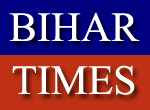|
23/09/2015 The Upper Castes’ dilemma in Bihar
|
Though the media in Bihar is busy assessing the voting trends of Other Backward Castes, Extreme Backward Castes’, Dalits and minorities the truth is that it is the upper castes’ voters, who are facing the ultimate dilemma in the state. Estimates suugest that there are around 14-15 per cent upper castes’ voters in the state. As high as 78 per cent voted for the NDA in the last Lok Sabha election, which is highest by any social group. In contrast only 42 per cent Dalit and 53 per cent Extreme Backward Castes voted for the Bharatiya Janata Party-led National Democratic Alliance. Over 64 per cent Yadavs, the biggest among the OBCs, voted for the RJD-Congress-NCP combine. Thus hardly one-fifth of Yadavs threw their lot behind the saffron brigade. The media is ignoring the likely voting pattern of upper castes though they are, as usual, the main opinion-makers in the state. The incumbency factor against UPA coupled with powerful projection of Narendra Modi as an alternative drove an overwhelming number of upper castes’ voters towards the NDA in 2014. Yet in the 15 months they have become a bit disillusioned with the Union government. In spite of this they are not inclined towards the grand alliance of the JD(U), RJD and Congress. Most upper castes are locked in a grim battle of heart and mind within. By mind an overwhelming number of them are no more inclined towards the Modi government, which did not fulfil any major promises made on the eve of Lok Sabha election. No new job was created, nor was black money brought to the country. There was a marginal rise in the Minimum Support Price. The land acquisition policy hit the upper castes harder as they still possess much larger chunk of land than the backwards. Only a miniscule proportion of the upper castes are benefited by the policy of corporatization. But by heart they are still with the NDA for obvious social and emotive reasons. In this era of 21st century a large percentage of them are still not prepared to vote for the alliance which espouses the cause of backward castes’. They may take the excuse of Nitish Kumar joining hands with the Mandal messiah, Lalu Prasad. But that is not the whole truth. Last year too they deserted Nitish when there was no Lalu with him. They may argue that they taught Nitish a lesson because he back-stabbed the BJP in 2013. But Nitish is not alone to do so. Naveen Patnaik did so just ahead of 2009 Lok Sabha election following the anti-Christian riots in 2008. He threw the BJP out and went on to win the 2009 Assembly as well as Lok Sabha elections in Odisha. Mamata Banerjee too had a history of snapping ties with the BJP yet she also stopped the Narendra Modi juggernaut in West Bengal. Nitish was not a less performing CM then those two, yet he failed to attract upper castes’ votes. Till June 16, 2013, when he broke alliance with the saffron party, the upper castes in particular, used to praise him to sky. Nitish misjudged the situation in 2014. But after the election results he took an unexpected U-turn. He mended his fence with the old friend Lalu Prasad after about two decades of worst political rivalry. No doubt the first seven and a half years of Nitish Kumar rule––between November 24, 2005 and June 16, 2013––was politically the best period for the upper castes since 1990. After the political marginalization in 15 years of Lalu-Rabri raj they emerged as a king-maker. If a big percentage of upper castes are inclined towards the BJP it is not because they are enamoured by its policies and programmes. On performance level they may still give much more marks to Nitish than Narendra Modi. Yet they may vote for the saffron party because it is by bringing BJP to power that they may have hold on the levers of power in Bihar. Even if the BJP projects a backward leader as the CM it may be no problem for the upper castes as they had managed to do business with Nitish. But that is not possible with the same person now.
|
|


